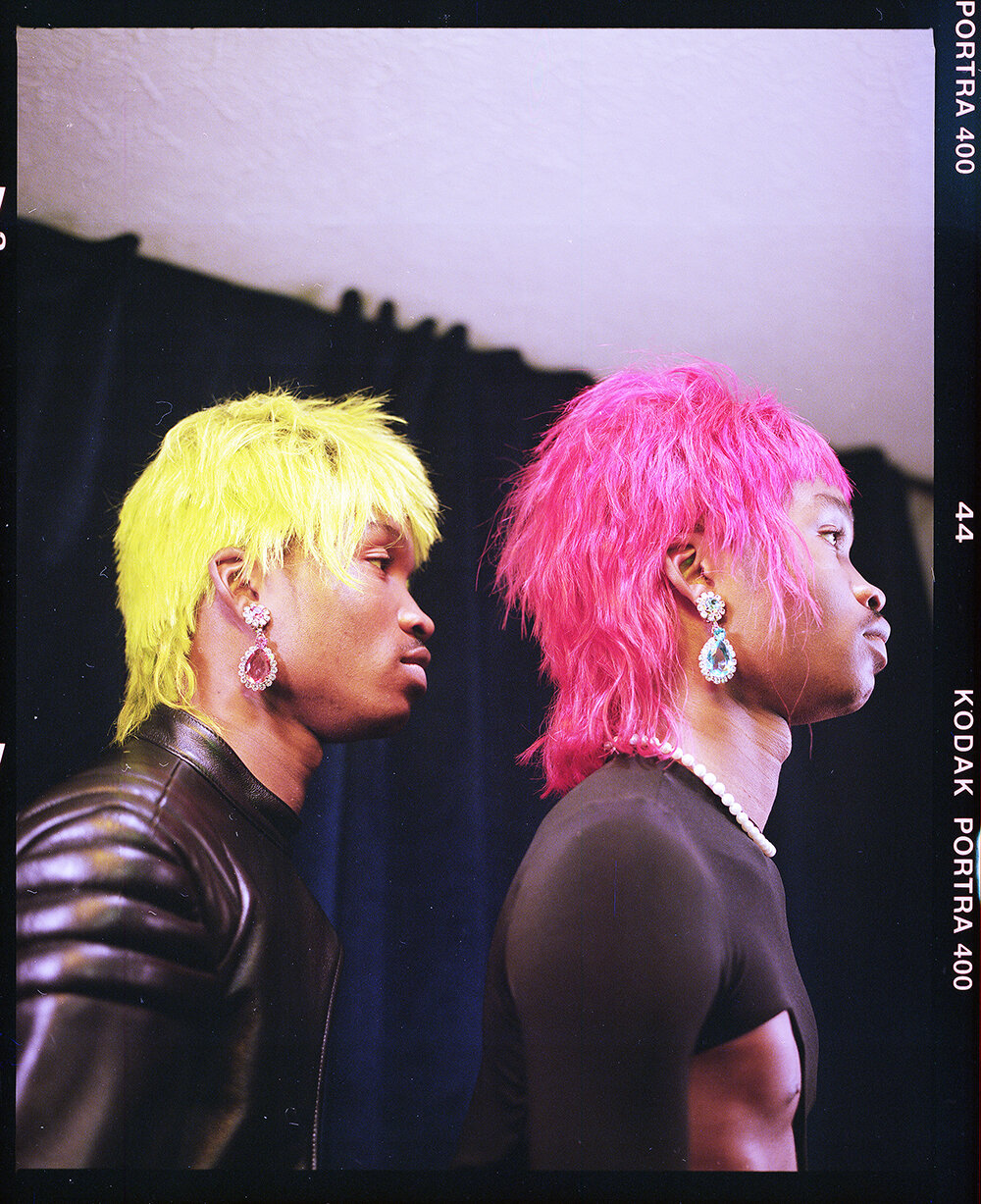
jorian charlton Detail of Untitled (Shai & Lex), 2020
Curated by Emilie Croning
In 2017, Jorian Charlton was given a collection of hundreds of vintage 35mm slides from her father for safe-keeping and preservation. The images reflect his time spent in Jamaica, Toronto, and New York between the late 1970s to the late 80s and offer a window into Charlton’s family lineage across culture, land, and people.
Out of Many pairs Charlton’s photographic practice alongside her father’s images, creating an intergenerational dialogue that explores the aestheticized family album in a contemporary context. The online ‘Living Room’ presents these unique slide images. As objects, the vintage slides present an opportunity to anchor ourselves into histories of vernacular images representing Black life and acknowledge the importance of this gesture. The exhibition reframes diasporic narratives and the fluidity of the immigration story to reflect on intersections between public and private histories.
While her father’s slides present familiar representations of home, freedom, and agency, Charlton visualizes new ways of storytelling with a unique set of visual references around black aesthetics and Jamaican-Canadian identity. She uses both digital and analogue photography to create spaces in which her muses embody personal freedoms through fashion, beauty, and trust. Together, her images and her father’s slides create a tangible archive of what was, what is, and what will become - one, out of many.
jorian charlton Untitled (Angaer), 2019
jorian charlton Untitled (Bambii), 2020
jorian charlton Untitled (Jem & Mikki), 2020
jorian charlton Untitled (Georgia), 2020
Though Charlton’s family slides are anchored in the past, they are not frozen in linear time. There is a unifying thread that links them with Charlton’s own contemporary practice; the ability to present portraits that exist both everywhere, and nowhere in particular. They are a vehicle for intergenerational conversation and contemplation mediated by family and community.
The individuals in Charlton’s photographs become stand-ins for everyday Black folks, whose beauty and culture often lack recognition and representation as they are. Taking cues from fashion photography, Charlton’s way of working emphasizes her sitter’s active role in being photographed. In doing so, her photographs distill reflections of identity and Jamaican-Canadian culture, and grant the power of picturing what is not - full, complete agency over self-representation - but should be.
jorian charlton Untitled (Keosha), 2020
jorian charlton Untitled (Ayo & Georgia), 2019
jorian charlton Untitled (Georgia & Kukua), 2020
Charlton’s photographs emit warmth and tenderness; gestures that are echoed in the way she approaches her muses. She is exploring the limitless possibilities of portraiture with a keen awareness and attention to detail responding to the needs of representing Black folks and communities.
jorian charlton Untitled (Georgia), 2020
jorian charlton Untitled (Georgia), 2020
“Beauty can be and is present in our lives irrespective of our class status. Learning to see and appreciate the presence of beauty is an act of resistance in a culture of domination that recognizes the production of a pervasive feeling of lack, both material and spiritual, as a useful colonizing strategy.”
—bell hooks “In Our Glory: Photography and Black Life”, in Art On My Mind: Visual Politics, 1995
jorian charlton Untitled (Nyali & Nyromi), 2020
jorian charlton Untitled (James & Josh), 2020
jorian charlton Untitled (Whak & Mo), 2020
It is through her own lens that Charlton visualizes a contemporary way of storytelling. She is creating space for personal stories to be told. She is creating images of people to truly be seen. As her muses exist beyond a still frame and embody personal freedoms and desires, Charlton’s photographs too, are not frozen in time - they, like her father’s slide images, reflect ongoing histories of many times and many people.
“For black folks, the camera provided a means to document a reality that could, if necessary, be packed, stored, moved from place to place. [...] And, ultimately, these images, the world they recorded, could be hidden, to be discovered at another time.”
bell hooks “In Our Glory: Photography and Black Life”, in Art On My Mind: Visual Politics, 1995
Vintage 35mm slide (Red Stripe), photographed by Clayton Charlton c.1979-83. Collection of Jorian Charlton, reprinted 2020













